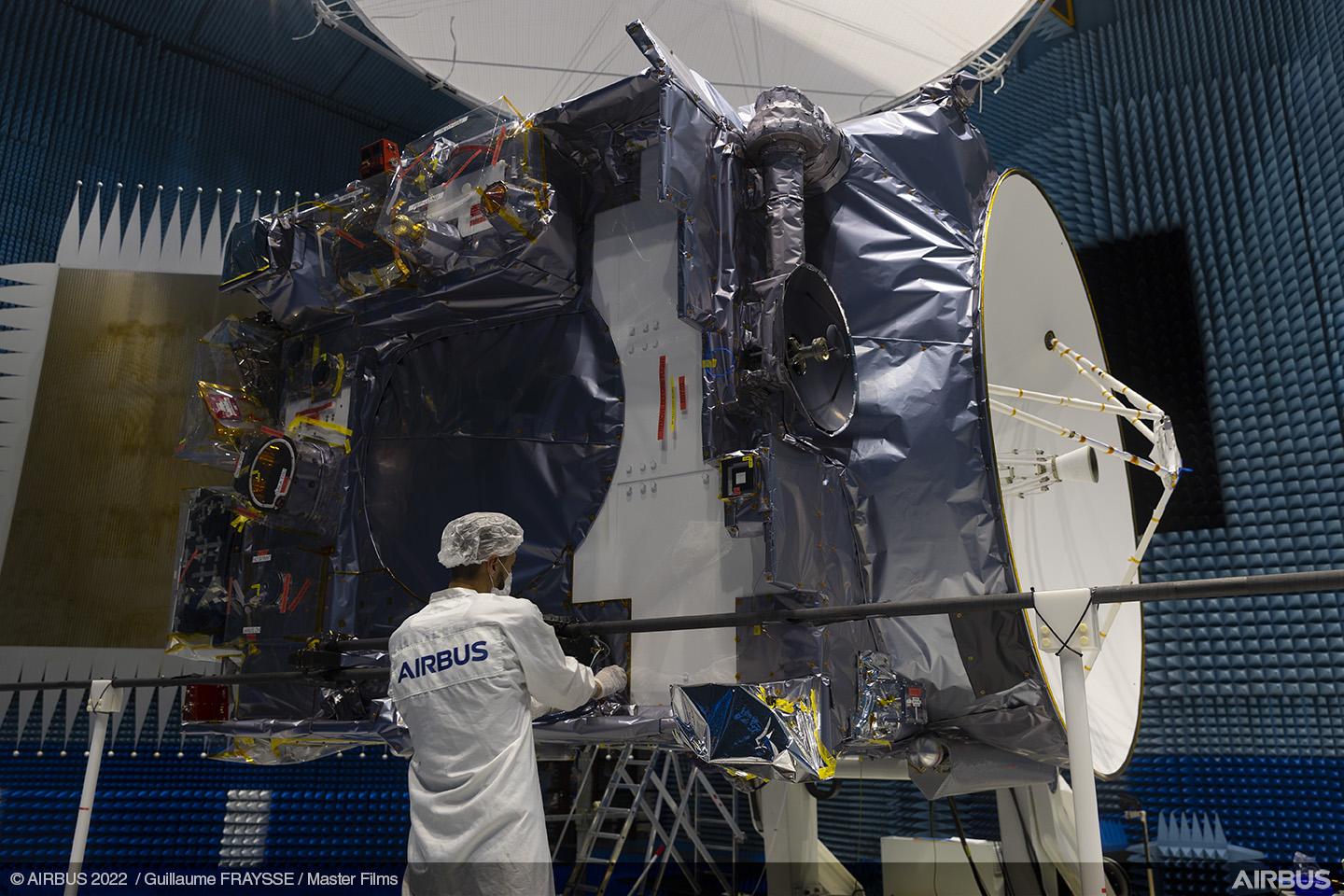
TOULOUSE–Airbus, the prime contractor for the European Space Agency’s (ESA) Jupiter Icy Moons Explorer probe, has started a series of critical tests on the spacecraft, which is due for launch in April 2023.
The €1.7 billion ($1.9 billion) mission has been devised to find out whether Callisto, Europa or Ganymede provide a suitable environment for life to develop. The Jupiter Icy Moons Explorer (JUICE) will not look for signs of current or past life, but rather help determine whether the conditions are met. It will also study the Jupiter system as a whole, hoping it helps in understanding some dynamics of the Solar System.
Ongoing electromagnetic trials are key as Jupiter’s radiation environment is the second harshest in the Solar System, after that of the Sun itself. “Ions hit the spacecraft, penetrate materials and degrade equipment,” says Cyril Cavel, Airbus’ JUICE project manager. “Some hardware has been protected thanks to shielded vaults, a dedicated design using a layer of lead. Other pieces of equipment have been protected individually with materials such as lead, tantalum or tungsten.”
A 22-layer insulation blanket has also been developed. One design driver has been to maintain a 1-volt equipotential surface. As the probe will have to describe plasmas, engineers do not want the electrically charged particles they are studying to be deviated.
JUICE’s stay in Airbus’ anechoic chamber in Toulouse also includes electromagnetic self-compatibility tests. The idea is to ensure onboard systems, such as the 10 scientific instruments, do not disturb each other, said Manuela Baroni, head of JUICE’s assembly, integration, testing and launcher interface for the ESA.
The 16-m (52-ft.)-long antenna for JUICE’s Radar for Icy Moons Exploration (RIME) is fully deployed to perform the tests. Its length will prevent electromagnetic interference with the spacecraft’s systems. RIME’s signal will reach a depth of 9 km under a moon’s surface.
The main feature of the three moons that JUICE will investigate is the presence of liquid water under an icy crust. Liquid water is an essential prerequisite for life. And the liquid state, as opposed to an all-icy planet, is evidence of a source of energy.
As for Jupiter’s system, it is understood to have similarities with the Solar System. The Sun’s magnetic field interacts with that of the Earth. Jupiter is believed to have a magnetic interaction with Ganymede, Baroni says.
The probe is planned to arrive in Jupiter’s system in July 2031.





